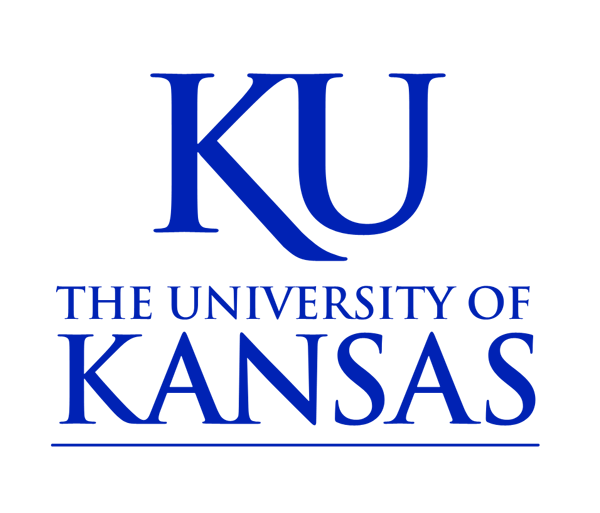From the Office of Public Affairs | http://www.news.ku.edu
Headlines
With new $11.35 NIH COBRE award, KU center continues fight against infectious diseases
LAWRENCE — The National Institutes of Health has re-upped its support of the Chemical Biology of Infectious Disease Center at the University of Kansas with a five-year, $11.35 Phase II grant. By funding research projects, hiring and supporting new faculty, improving core facilities and fostering a collaborative research network, CBID will build on previous accomplishments to push forward biological research underpinning next-generation drug therapies for infectious disease.
Relationships between transgender patients, physicians explored in ‘Medicalization’ history
LAWRENCE — A new scholarly article explores the history of what was labeled in 1966 as “the transsexual phenomenon.” The study by Marta Vicente, a professor of history and of women, gender & sexuality studies, reveals how the newsworthy narrative was created from the intersection of interests from both patients and their physicians, and how the media’s coverage of this factored into the process.
Full stories below.
————————————————————————
Contact: Brendan M. Lynch, 785-864-8855, [email protected]
With new $11.35 NIH COBRE award, KU center continues fight against infectious diseases
LAWRENCE — The COVID-19 pandemic is an awful reminder of the “perpetual” public health challenge of infectious disease. In addition to emerging contagions, the world also faces a decline in effectiveness of antibiotics for both human and animal health.
Now, the National Institutes of Health has re-upped its support of the Chemical Biology of Infectious Disease Center (CBID) at the University of Kansas with a five-year, $11.35 Phase II grant. This award mechanism is a component of the NIH Institutional Development Award Program and is a Center of Biomedical Research Excellence (COBRE).
By funding research projects, hiring and supporting new faculty, improving core facilities and fostering a collaborative research network, CBID will build on previous accomplishments to push forward biological research underpinning next-generation drug therapies for infectious disease.
“This Phase II award is to strengthen and expand the KU scientific community that focuses on better understanding and treatment strategies for infectious diseases with integrated chemical processes,” said principal investigator P. Scott Hefty, professor of molecular biosciences. “The CBID Center is intended to bridge infectious disease and medicinal chemistry expertise to better address the public health challenges.”
One of the primary goals of COBRE is to support mentoring of new faculty in obtaining external funding, Hefty said. Another goal is to improve infrastructure, primarily through supporting core research facilities.
“Three scientific cores are supported by this NIH funding, which enables investigators to utilize these research and scientific capabilities,” he said. “Also, the center builds community, bringing together many different scientists not just from within KU, but from the University of Kansas Medical Center, from Kansas State and other regional institutions.”
Along with Hefty, the CBID Center is led by Jon Tunge, professor of chemistry, serving as co-investigator. Serving as scientific consultants are Lynn Hancock, associate professor of molecular biosciences, and Ilya Vakser, professor of molecular biosciences and Center for Computational Biology director.
Under the Phase II COBRE support, two new full-time faculty positions will be created in KU’s Department of Molecular Biosciences. These new faculty hires will compliment previous hires made under CBID’s Phase I funding: Anthony Fehr, assistant professor of molecular biosciences, who researches coronaviruses, and Mark Ferrell, assistant professor of medicinal chemistry, who works to develop vaccines.
Fehr, the coronavirologist, was one of the first Phase I hires, pre-COVID.
“So we look like geniuses now, of course,” Hefty said, “but he has been incredibly successful at getting external funding. Additionally, Mark Farrell from medicinal chemistry works on vaccine development and improving immunogenicity. Those two hires during Phase I are a reflection of what we hope to gain in Phase II.”
Hefty and Tunge will oversee and enhance the CBID’s three research cores in Infectious Disease Assay Development, Computational Chemical Biology and Synthetic Chemical Biology. These cores expand the research capabilities for investigators by offering them advanced tools and support. Hancock and Vakser also serve as scientific leaders for these cores.
As an example of the cores’ role, under Phase I the Infectious Disease Assay Development core facility was established and outfitted to enable biohazard and specialized assay development as well as small-scale screening for infectious disease targets. This removed a research barrier for a key group of investigators.
“With every organism, there’s going to be something unique about growing it or the conditions it needs,” Hefty said. “Our core helps investigators in developing assays that are suitable to go into high-throughput screening (HTS), so that you can screen tens or hundreds of thousands of compounds. But our researchers’ main barrier was infectious disease biohazard components. For them to bring in a biohazard meant they had to get approval for the entire facility.
“Now we have a separate physical location that’s next to the HTS facility but not within it, so that space only is used for biohazard engagement. It’s an add-on, enabling core to an existing core, which is the high-throughput screening facility.”
Beyond adding new faculty and developing research core facilities, CBID has financially backed promising investigations into infectious diseases by junior faculty at KU as well as pilot research projects at KU and partner institutions. Working with an external advisory committee, under Phase II the CBID will continue funding promising lines of investigation.
Ronak Tilvawala, assistant professor of molecular biosciences, is a biochemist investigating targets and potential inhibitors for COVID SARS-2 proteases. Steve Bloom, assistant professor of medicinal chemistry, is studying HIV and peptide therapies. Justin Hutchinson, assistant professor in the Department of Civil, Architectural and Environmental Engineering, is investigating non-tuberculosis mycobacterium in public-health settings and how water treatment and environmental sources for contamination and infection can be treated.
Another opportunity is pilot projects provided to support investigators from across the state. Investigators from the KU Medical Center, Kansas State University, Wichita State University and other regional universities are eligible for about $65,000 per individual per year for up to two years, Hefty said.
The improved facilities, promising investigations and strengthened research community will provide training opportunities for students and postdoctoral researchers, and also bolster the regional economy.
“The economic impact really is about training individuals that then go to work at local companies, whether you’re talking about graduate students, postdocs or technicians that have achieved a high level of expertise,” Hefty said, noting bioscience companies and other institutions in the region. “Our trainees will learn and then go to those places and support that continued engine of local businesses and economic activity.”
Moreover, Hefty said the cores not only support internal investigators, but they also support external, commercial entities that will use them.
More information about the CBID Center can be found at http://cbid.cobre.ku.edu.
-30-
————————————————————————
The official university Twitter account has changed to @UnivOfKansas.
Refollow @KUNews for KU News Service stories, discoveries and experts.
Tweets by KUnews
————————————————————————
Contact: Jon Niccum, 785-864-7633, [email protected]
Relationships between transgender patients, physicians explored in ‘Medicalization’ history
LAWRENCE — The endeavor of individuals who want to medically change their gender has become a hot-button topic in contemporary society. But it’s actually been part of the cultural dialogue for more than a century.
“The understanding is that it has always been a one-sided relationship,” said Marta Vicente, a professor of history and of women, gender & sexuality studies at the University of Kansas.
“The argument has been that scientific and medical developments in the 20th century made ‘sex-reassignment’ surgery possible, which helped the patients. What I see instead is that people seeking medical help were part of a relationship with surgeons and physicians, and each group benefited from it.”
Her new article titled “The Medicalization of the Transsexual: Patient-Physician Narratives in the First Half of the Twentieth Century” explores the history of what was labeled in 1966 as “the transsexual phenomenon.” This study reveals how the newsworthy narrative was created from the intersection of interests from both patients and their physicians, and how the media’s coverage of this factored into the process. The article appears in the Journal of the History of Medicine and Allied Sciences.
“People’s lives are shaped so much by the possibilities medical technology has to offer,” Vicinte said. “This dilemma concerns who is in control. Is the patient in control? The physician? Who has the agency to decide how a body is transformed? By examining the relationship between these doctors and their patients, it’s valuable to see how it was shaped by interest from both parties.”
Vicente’s piece analyzes three historical narratives: the medicalization of the homosexual, the birth of the transsexual and the physician-patient relationship in transsexual narratives.
Throughout these phases, the media took on a “very important role in shaping this conversation,” she said.
“Physicians and journalists had different audiences and targets. They were highlighting specific aspects of the transformation without really getting at the complexity of the experience. Especially for the American component of the media, it was the sensation of how bodies can be transformed by medical science. They all paid close attention to the surgery, while in fact, the journey of the transsexual started with endocrinologists and the emphasis on hormones.”
The media helped make celebrities out of several individuals during this formative medical era. The first was Lili Elbe, whose story provided the basis for the Oscar-winning 2015 biopic “The Danish Girl.”
“I didn’t care for that movie,” Vicente said. “But it’s based on a novel inspired by the lives of Lili Elbe and Gerde Wegener, and I was totally taken by the facts of the story. It’s very tragic. She died shortly after her last surgery (in 1931). While she was having the surgery, it was on the front page of American newspapers — like the Omaha World-Herald. Everyone knew about Lili.”
Even better known was the account of Christine Jorgensen, an American Army veteran seeking a sex change who became an international celebrity in the 1950s.
“Everyone was waiting for this case to happen – it had been building up for decades — and then it burst,” Vicente said.
Although Jorgensen’s surgery was successful, her engagement to Howard Knox stalled when New York refused to grant them a marriage license because her birth certificate listed her as male. She became a trailblazer for transgender rights, along with gaining fans as an actress and popular nightclub entertainer.
“Nowadays, transgender scholars have criticized Jorgensen as someone who fell into this feminine stereotype of the 1950s as the perfect housewife,” Vicente said. “While they recognized her role as a pioneer of transgender rights, they were critical of how much she tried to fit within the system. But if you look at all those cases carefully, you see that there are more nuances.”
As noted in Vicinte’s article, “once sex-reassignment surgery was legalized in the United States, physicians, sometimes aided by the law, would refuse to operate on a body that did not fulfill the requirements of ‘the good transsexual,’ one that was white, heterosexual and displaying the expected middle-class characteristics of a good wife or husband.”
While the drama surrounding those standards appears somewhat antiquated, a contemporary controversy remains: language.
“How do you talk about gender identity, all those people and their experiences, when the current terms did not exist? How do you bypass the fact that ‘transsexual’ was a word not widely used until the 1960s? Now some individuals may find it offensive to be called transsexual instead of transgender. But before transsexual, people were using words such as androgynous, homosexual and hermaphrodite,” she said.
“So it’s a challenge using words that mean something only in a historical context while still being able to provide an umbrella to understand experiences that trespass different historical contexts.”
A native of Barcelona, Vicente has been at KU since 1997. She is the author of “Debating Sex and Gender in Eighteenth-Century Spain” (Cambridge, 2017). Her expertise centers on queer studies, queer theory, feminist history and sexuality.
“I hope this article adds to the new amount of research being done in how much we need the historical understanding of transgender history and how this is going to reveal more about the construction of gender,” Vicente said.
“Transgender history is not isolated from other issues. Ultimately, we’re all in this together.”
-30-
————————————————————————
KU News Service
1450 Jayhawk Blvd.
Lawrence KS 66045
Phone: 785-864-3256
Fax: 785-864-3339
[email protected]
http://www.news.ku.edu
Erinn Barcomb-Peterson, director of news and media relations, [email protected]
Today’s News is a free service from the Office of Public Affairs





